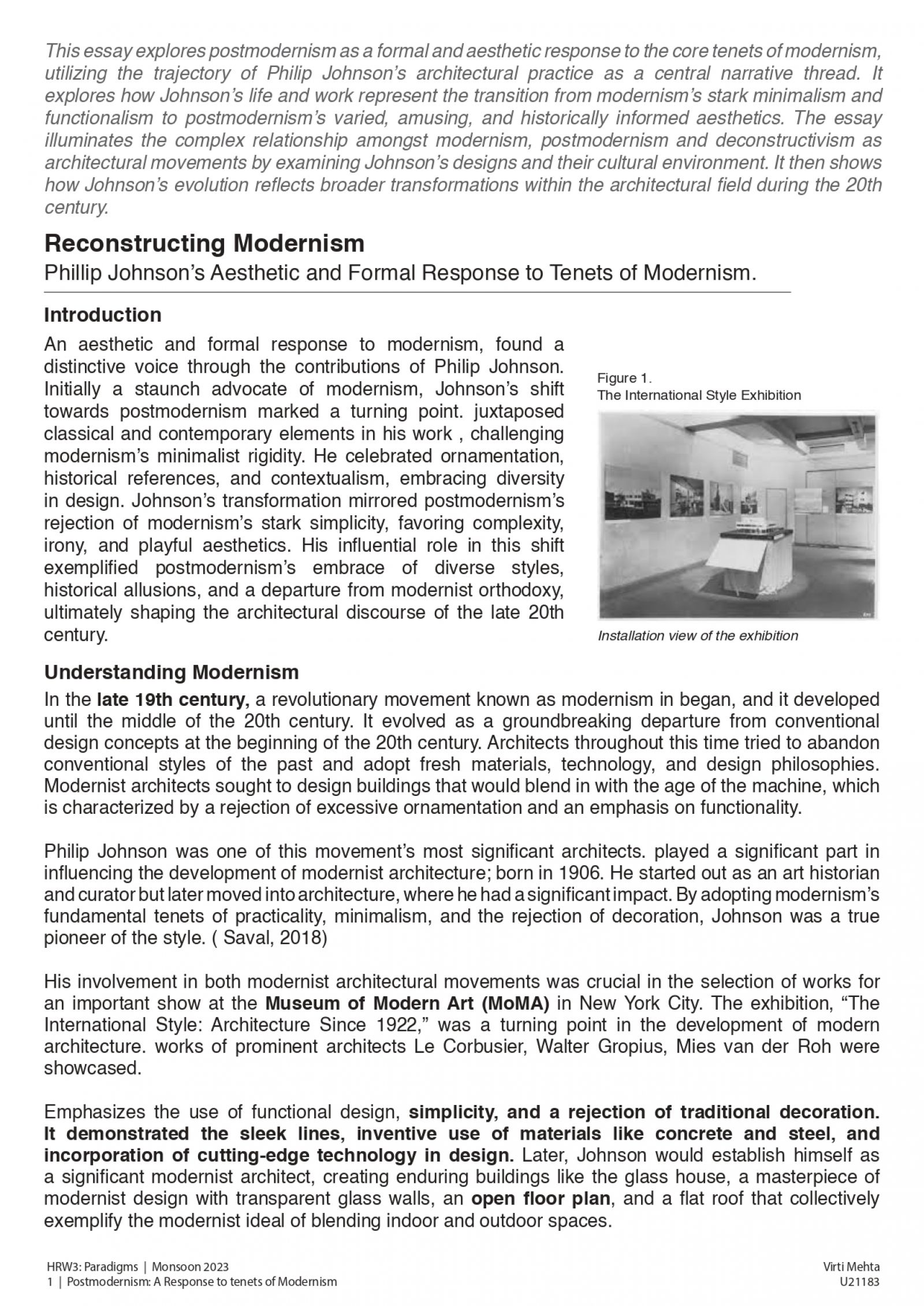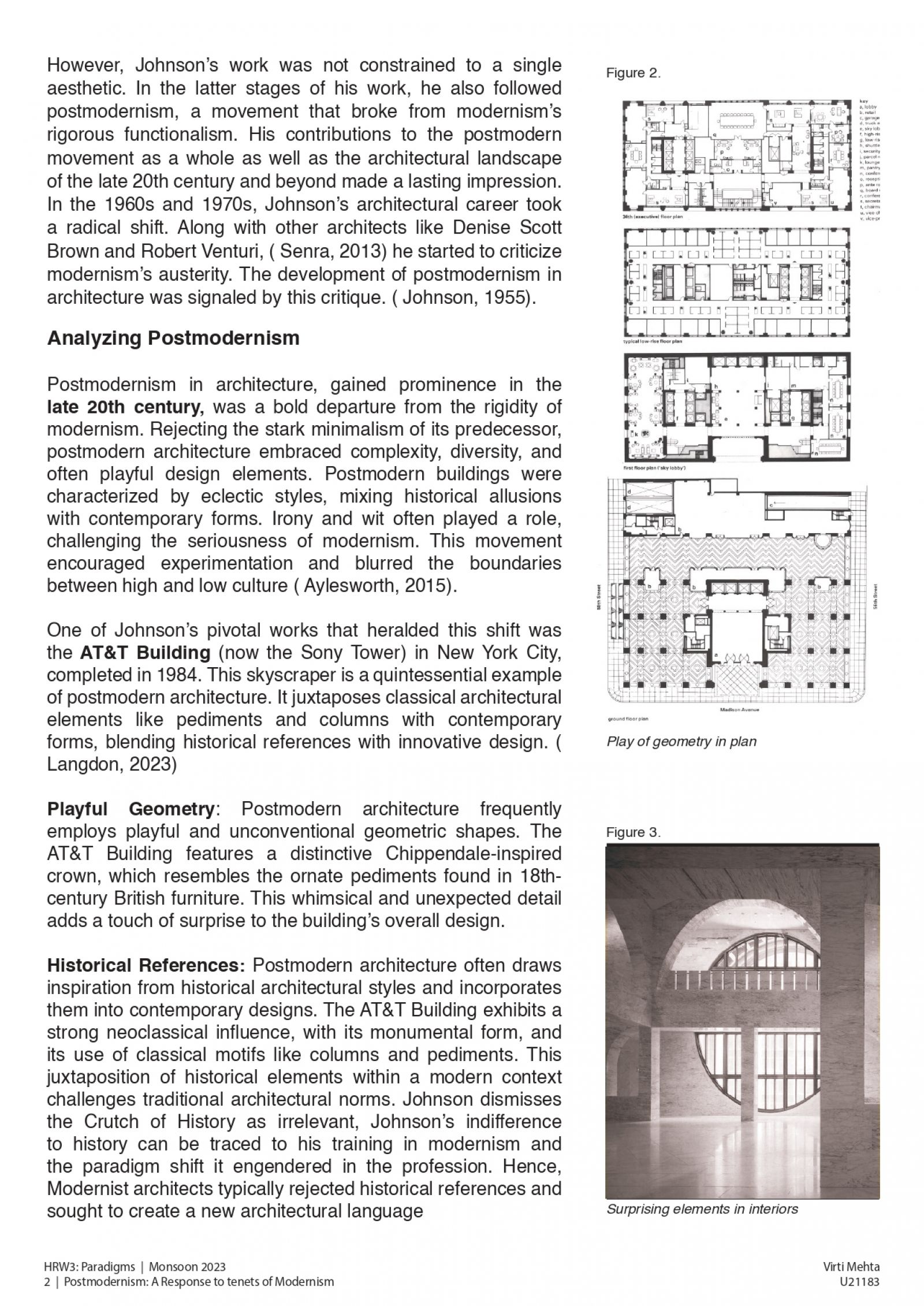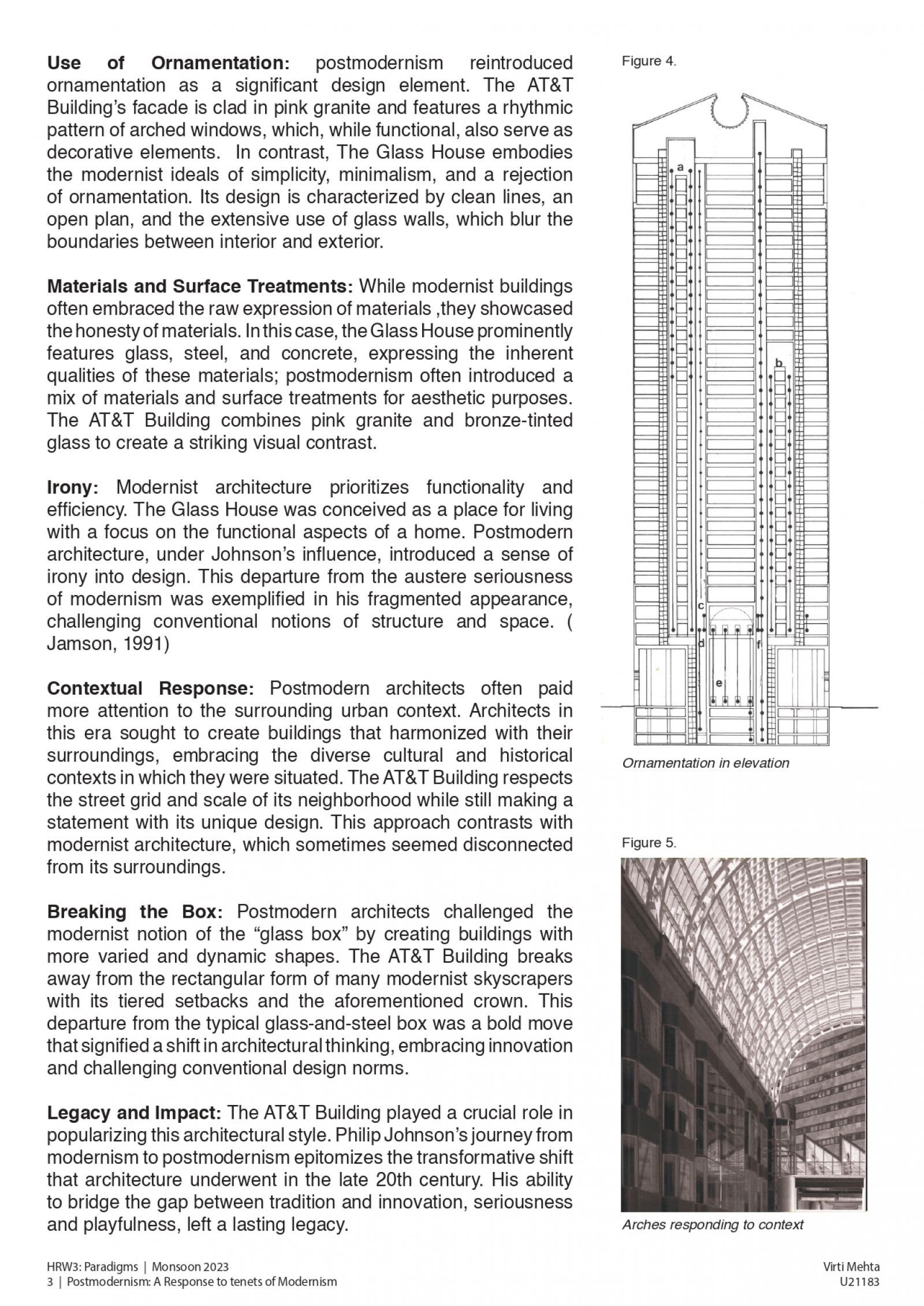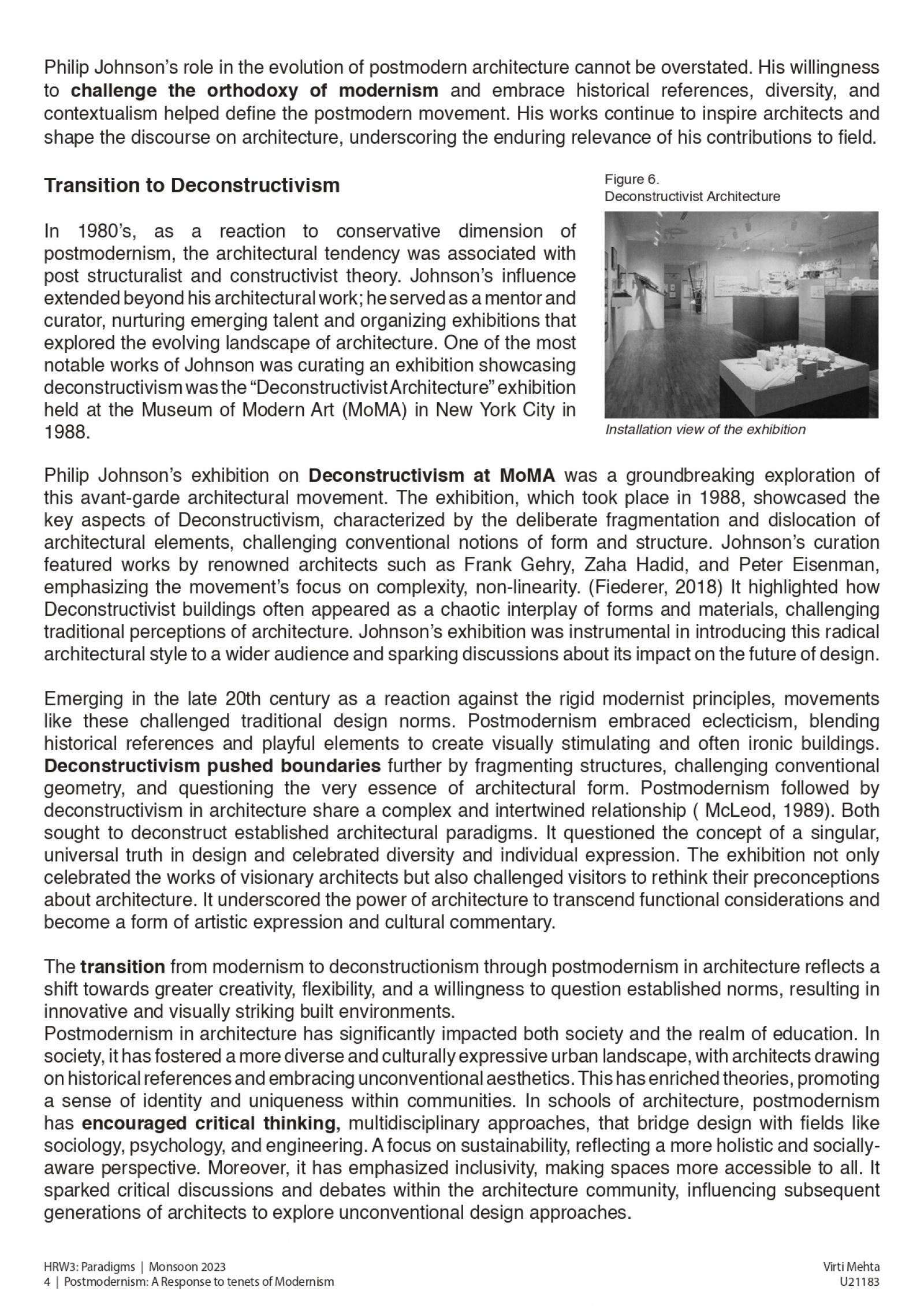Your browser is out-of-date!
For a richer surfing experience on our website, please update your browser. Update my browser now!
For a richer surfing experience on our website, please update your browser. Update my browser now!
This essay explores postmodernism as a formal and aesthetic response to the core tenets of modernism, utilizing the trajectory of Philip Johnson’s architectural practice as a central narrative thread. It explores how Johnson’s life and work represent the transition from modernism’s stark minimalism and functionalism to postmodernism’s varied, amusing, and historically informed aesthetics. The essay illuminates the complex relationship amongst modernism, postmodernism and deconstructivism as architectural movements by examining Johnson’s designs and their cultural environment. It then shows how Johnson’s evolution reflects broader transformations within the architectural field during the 20th century.




(1)(1).jpg)